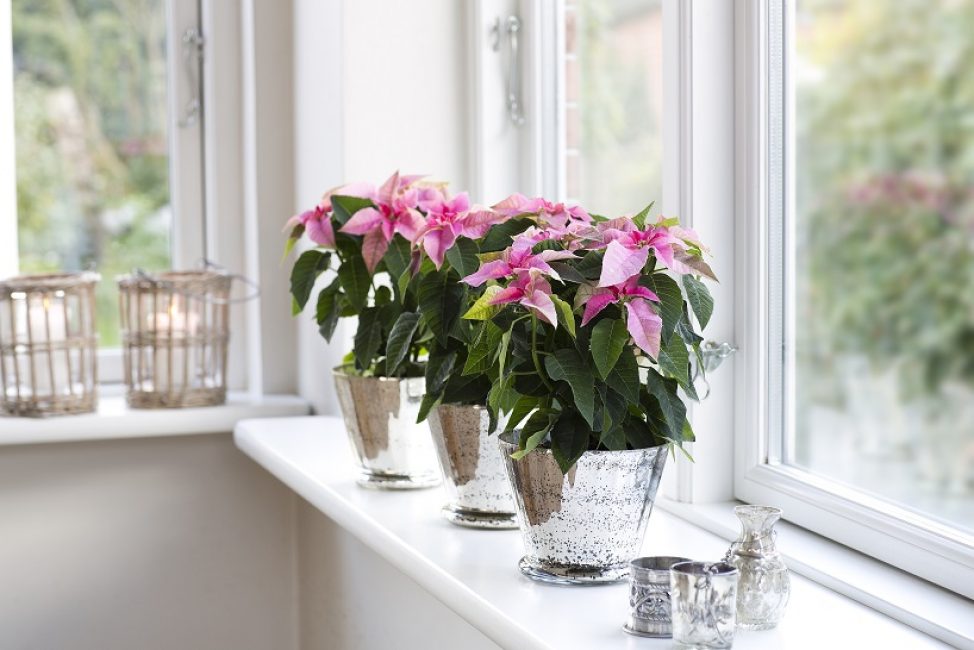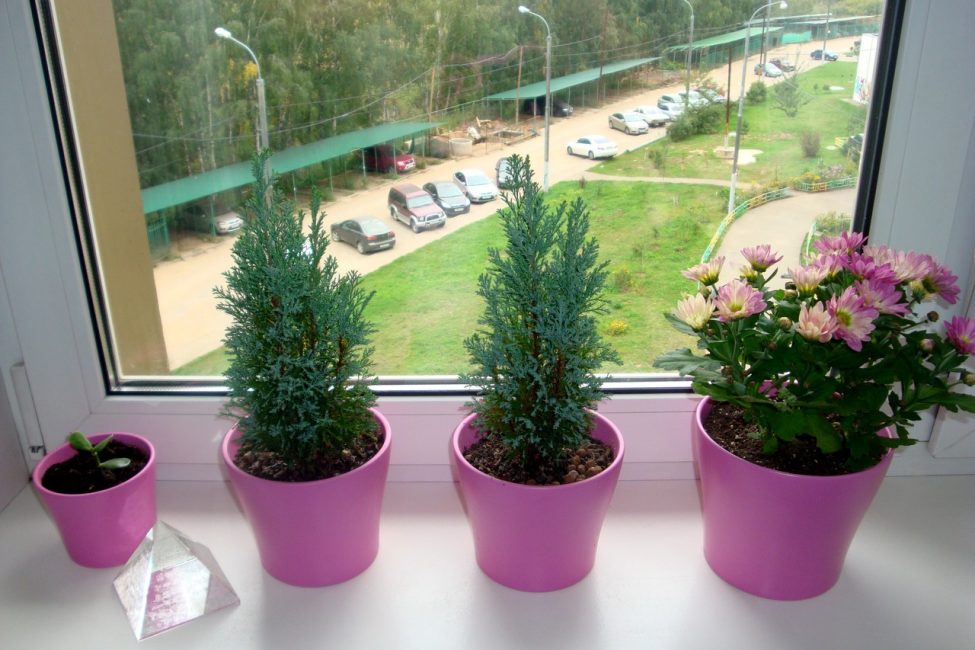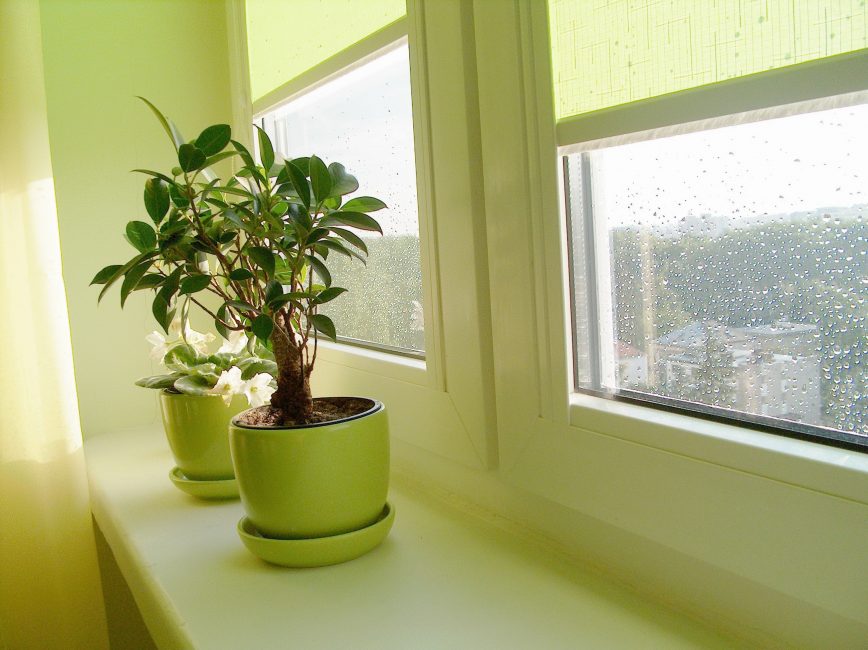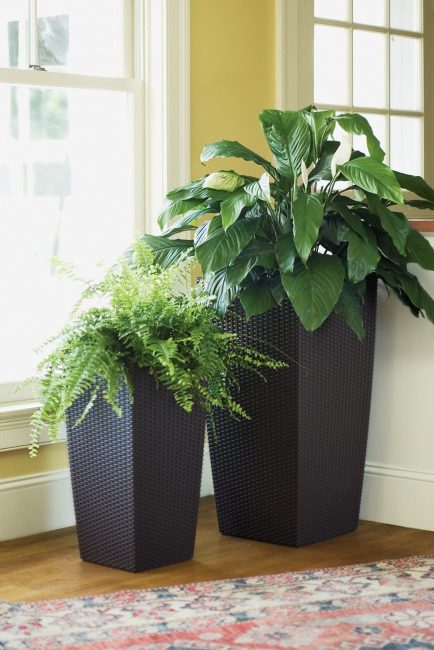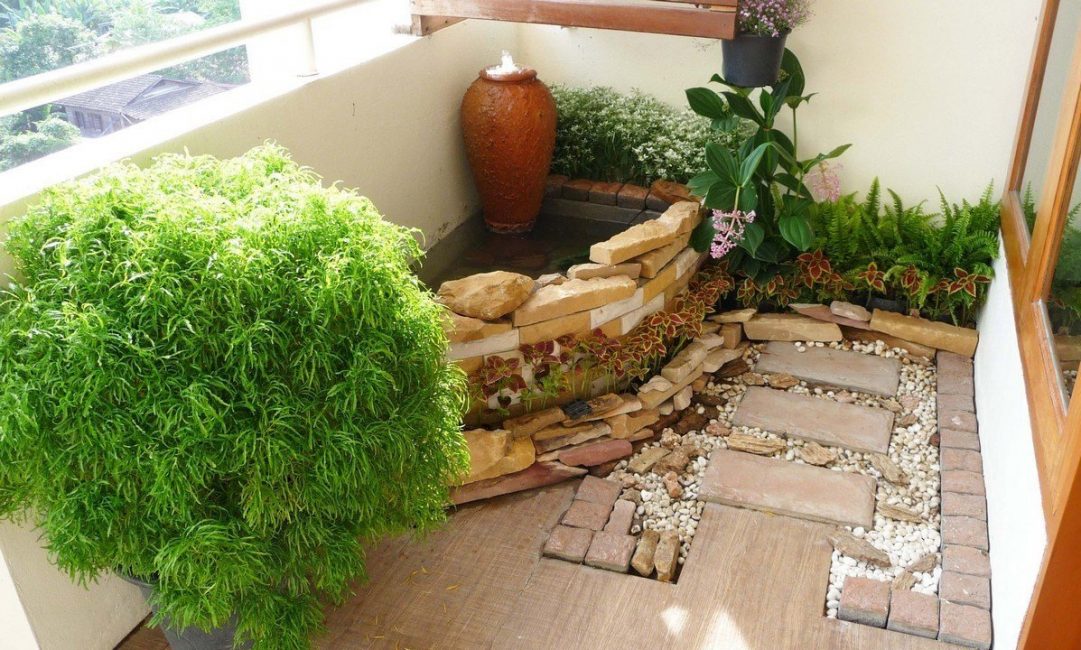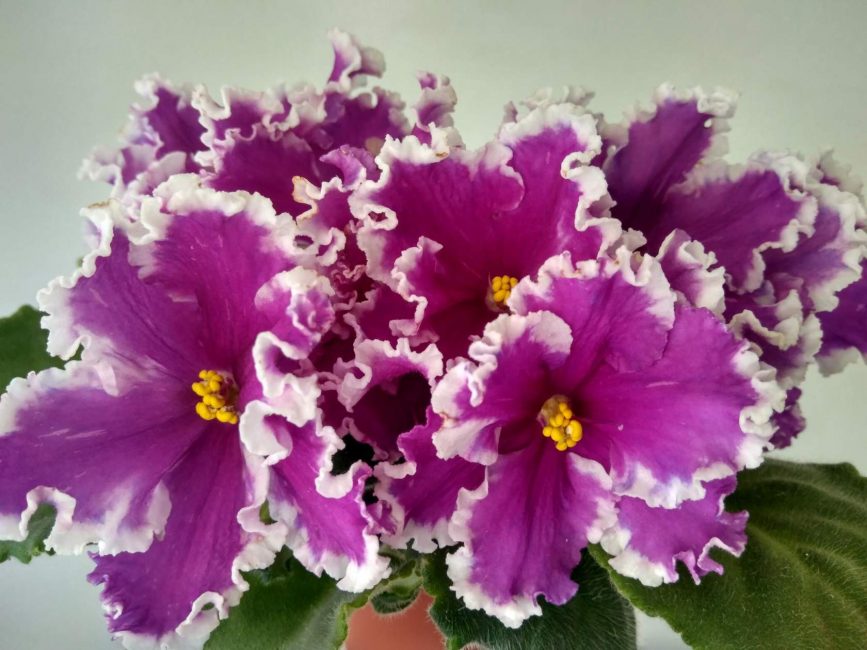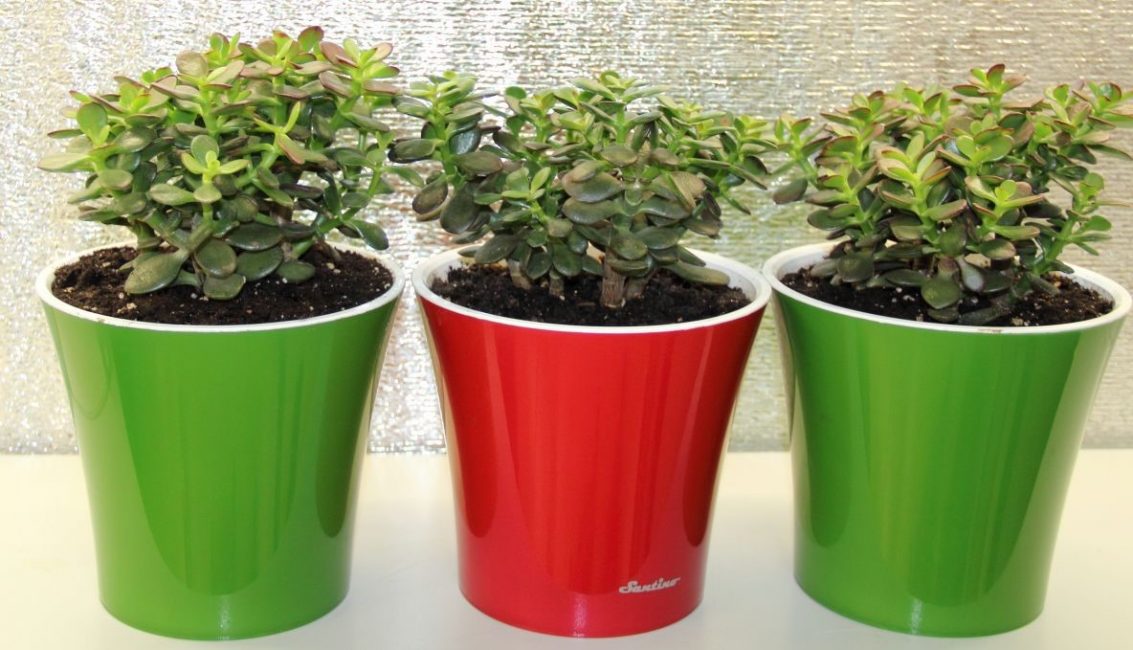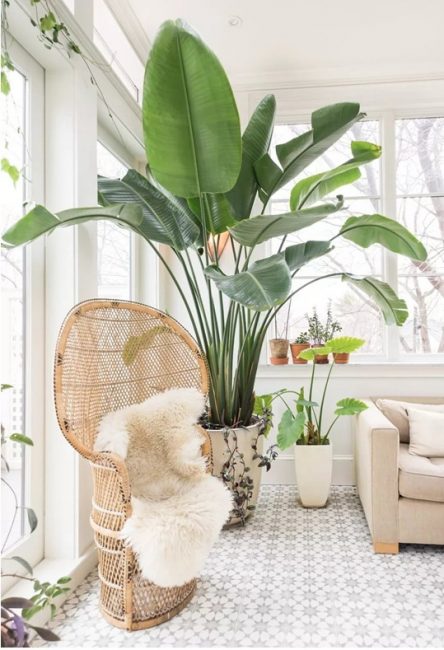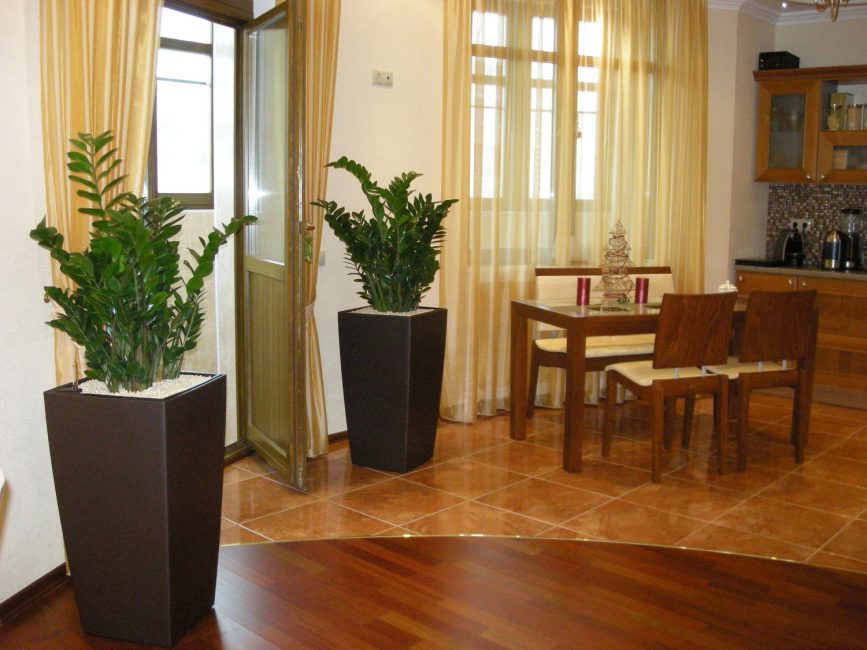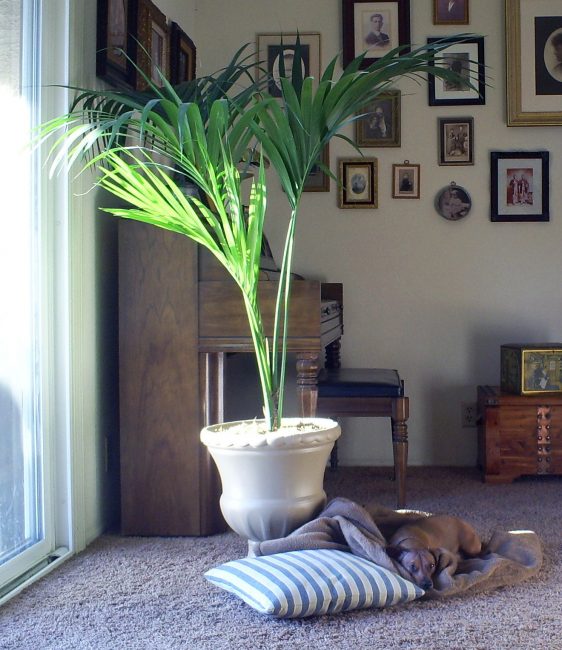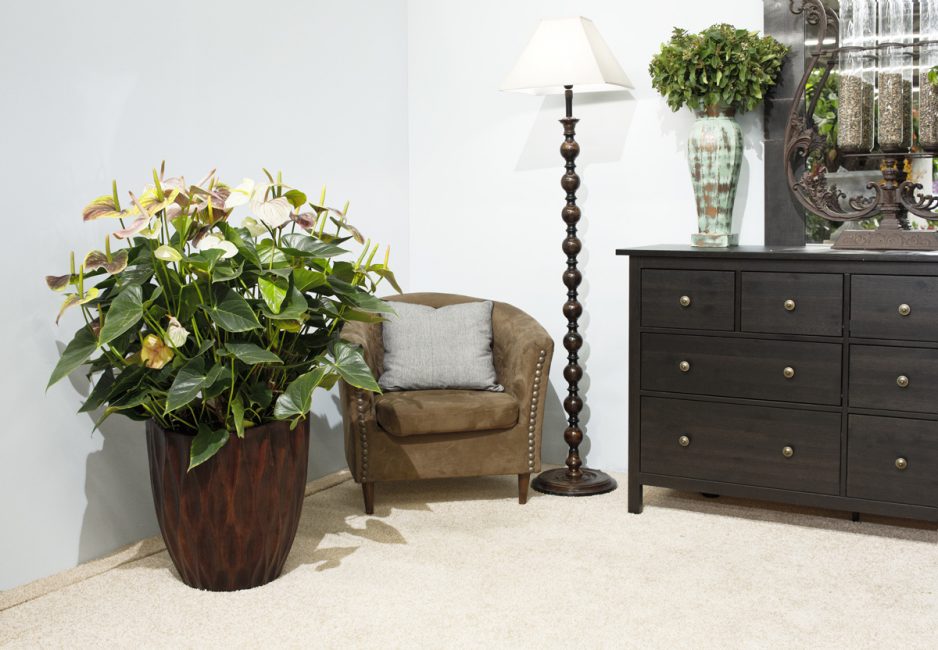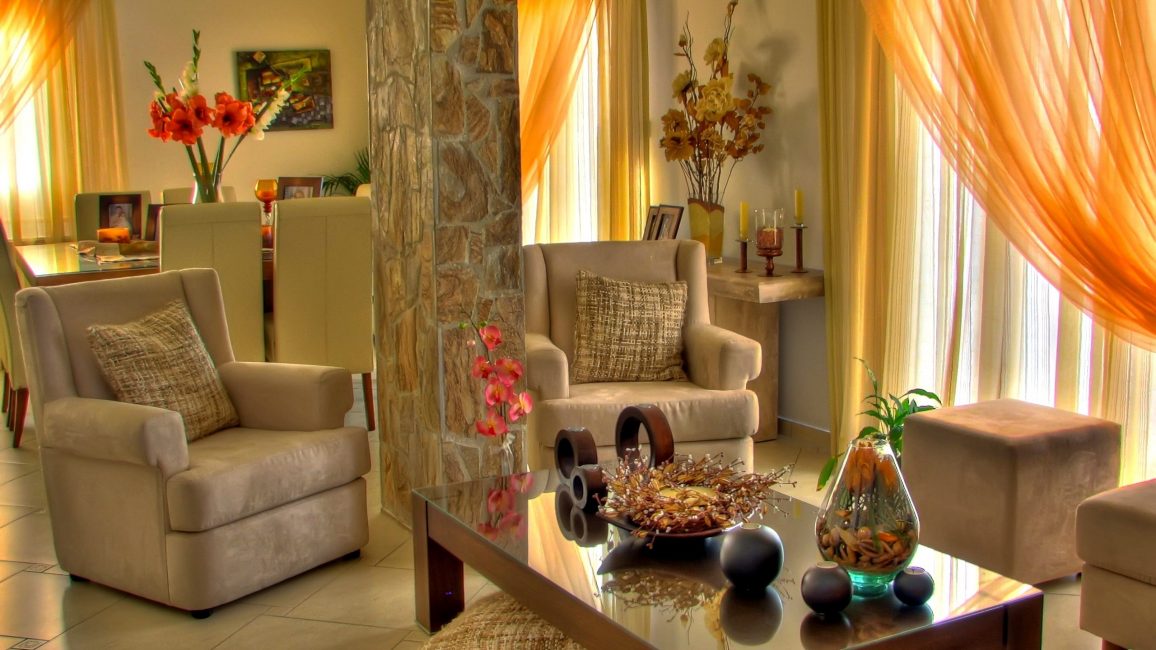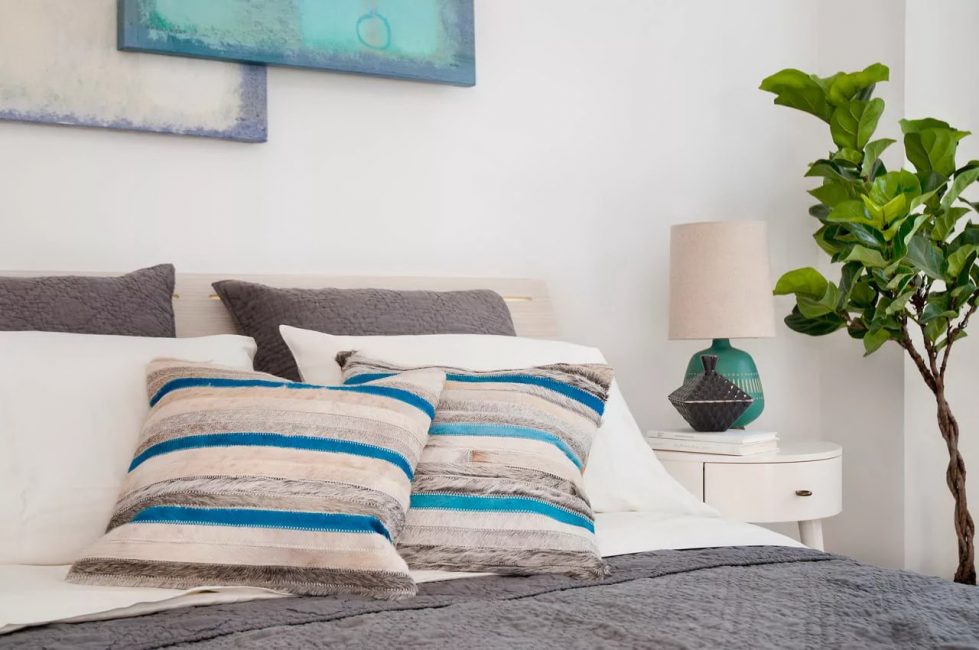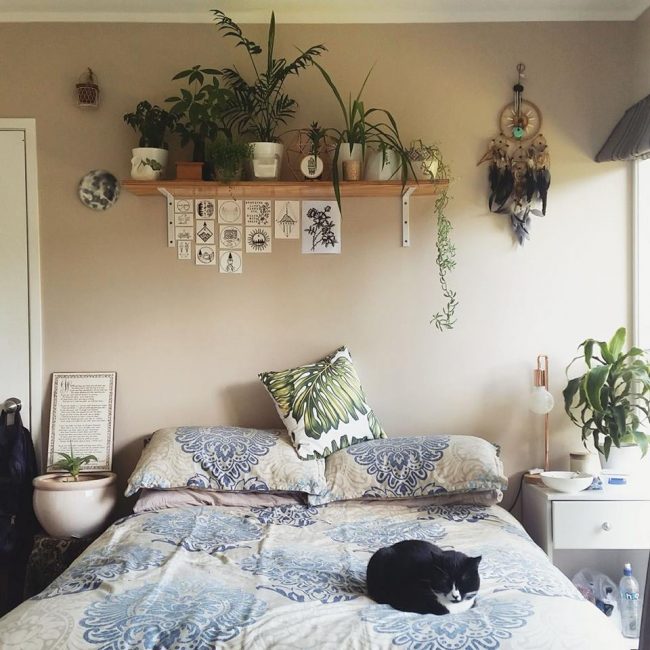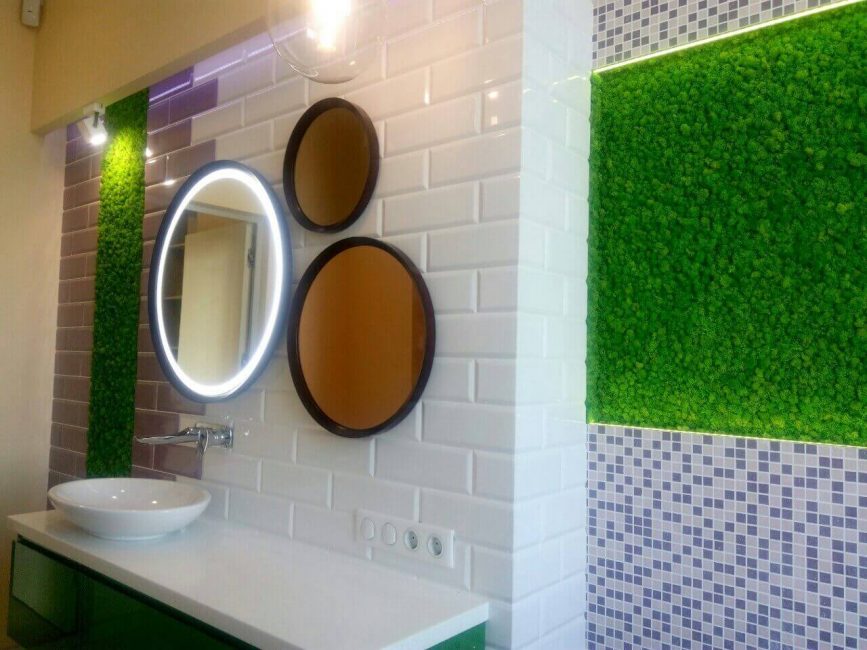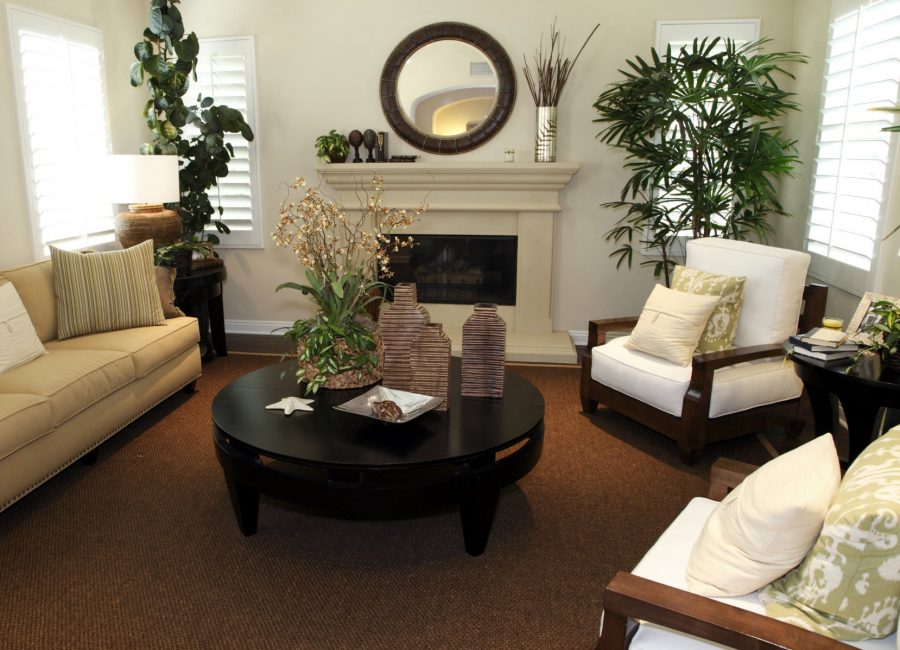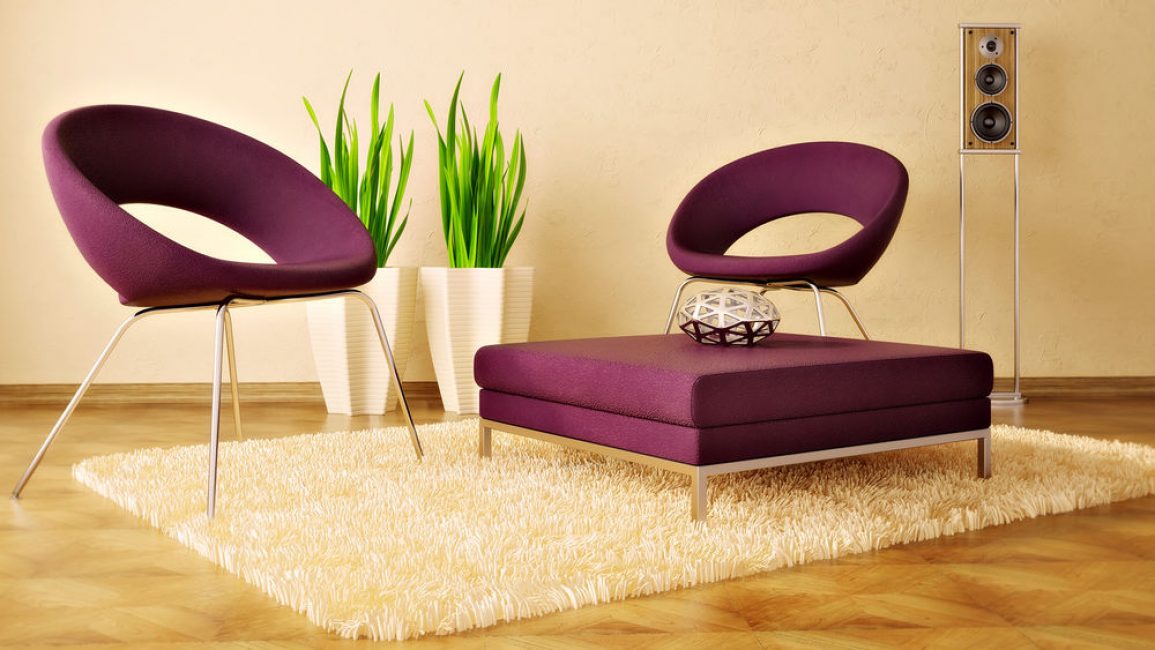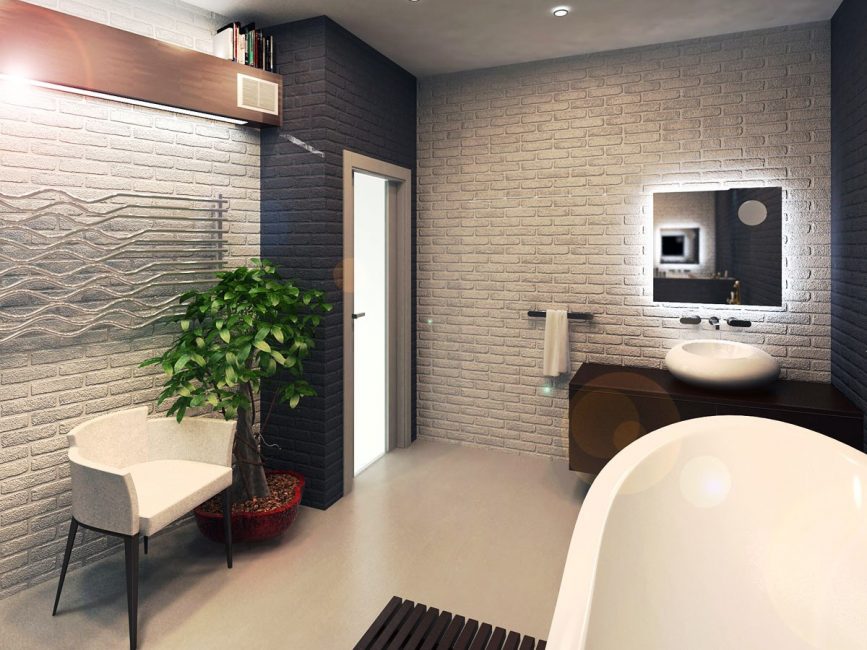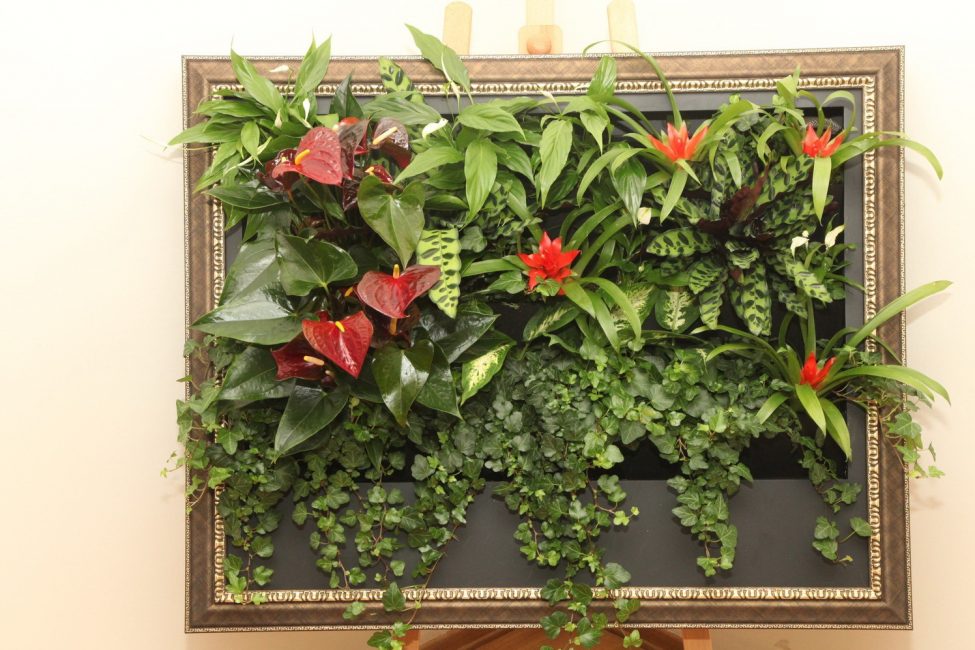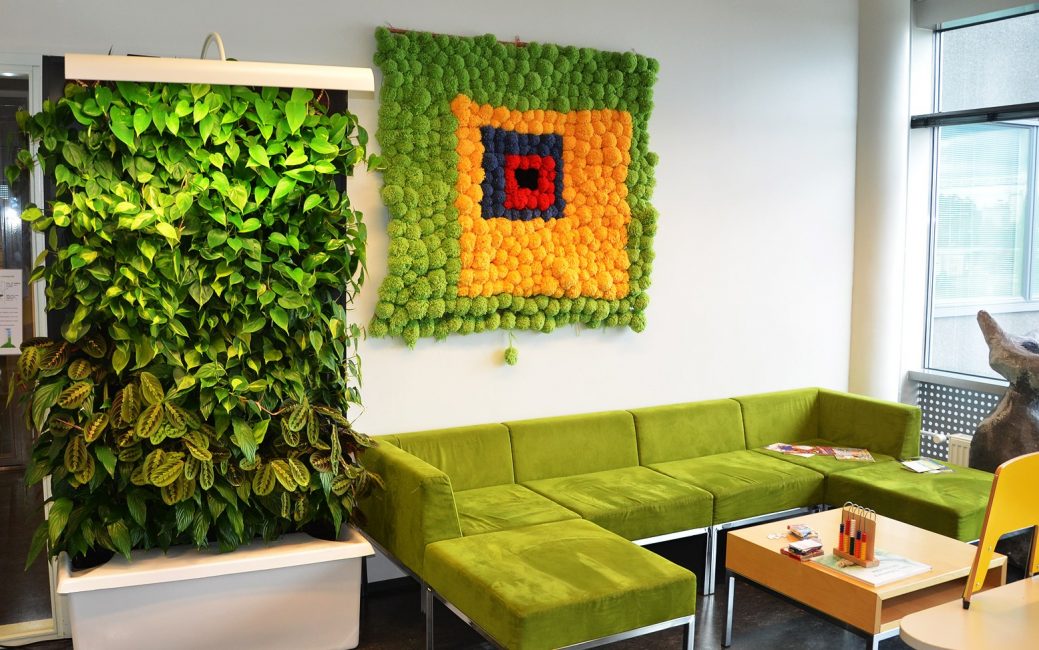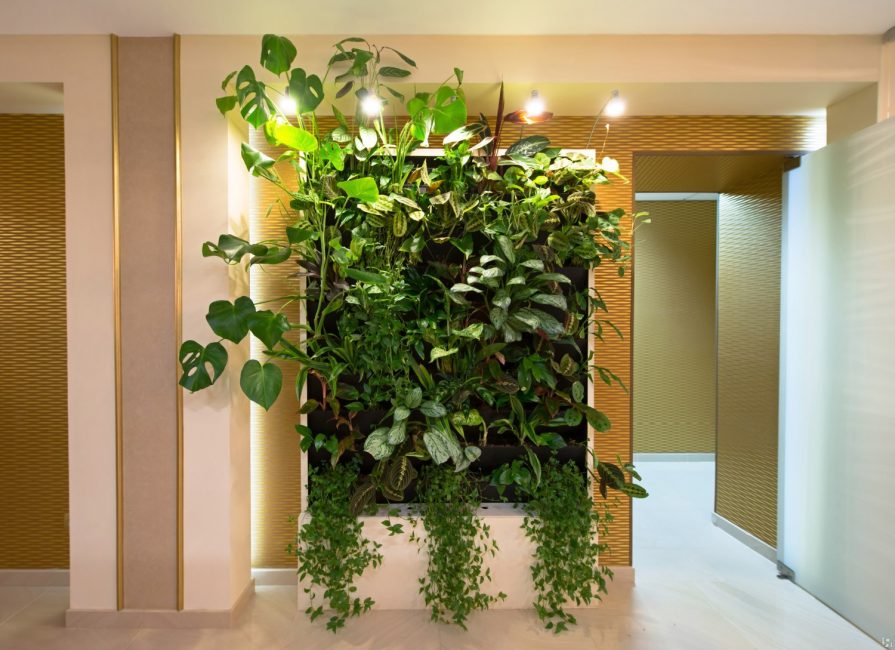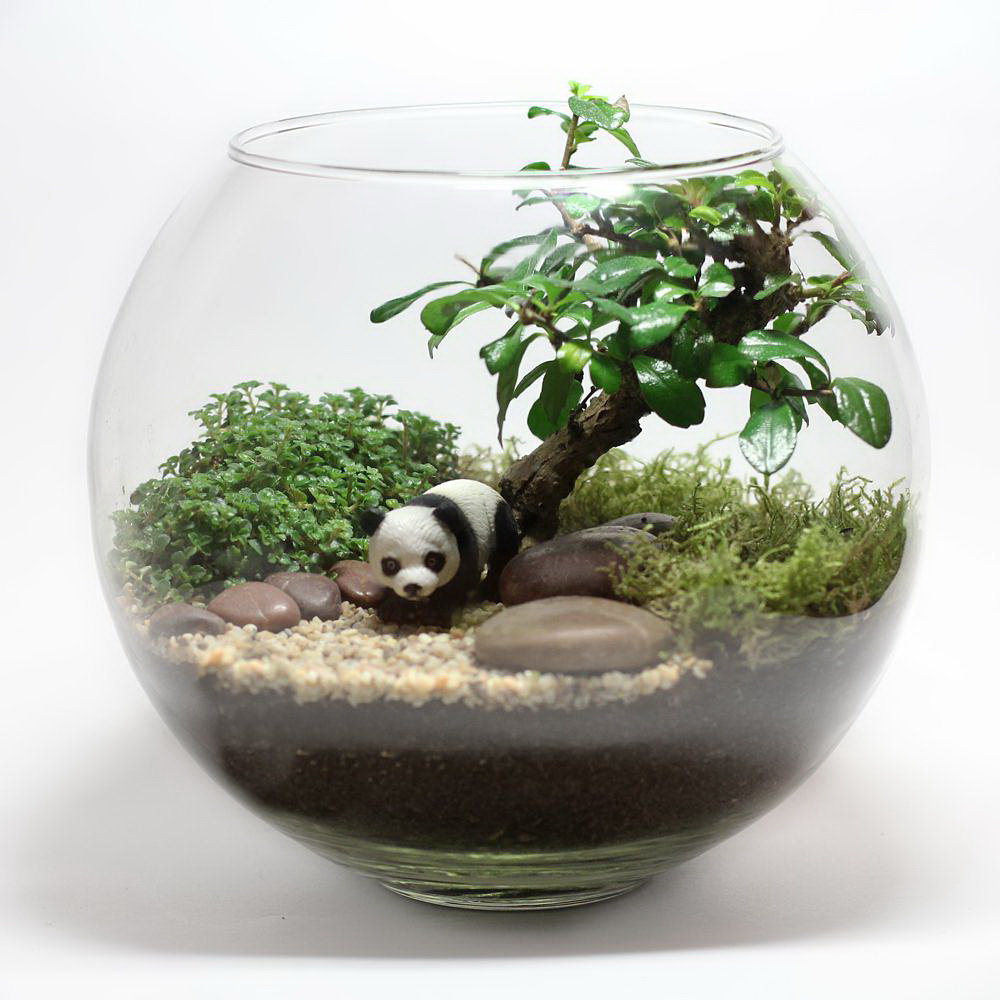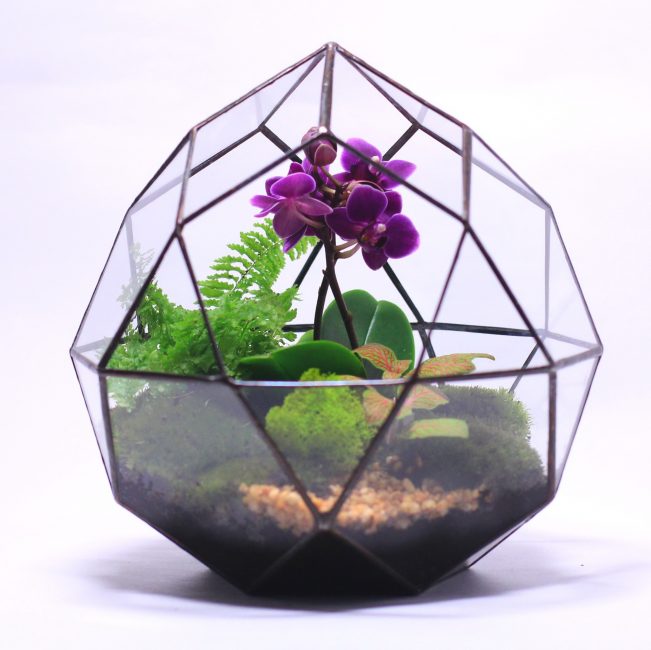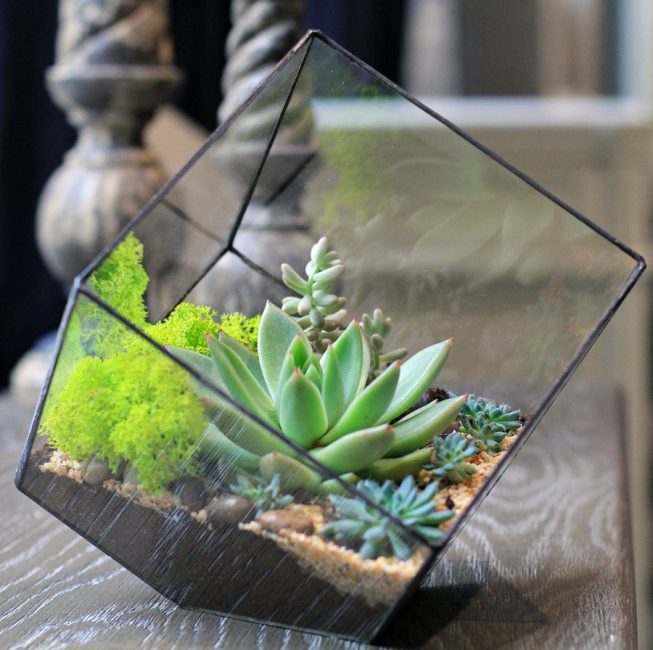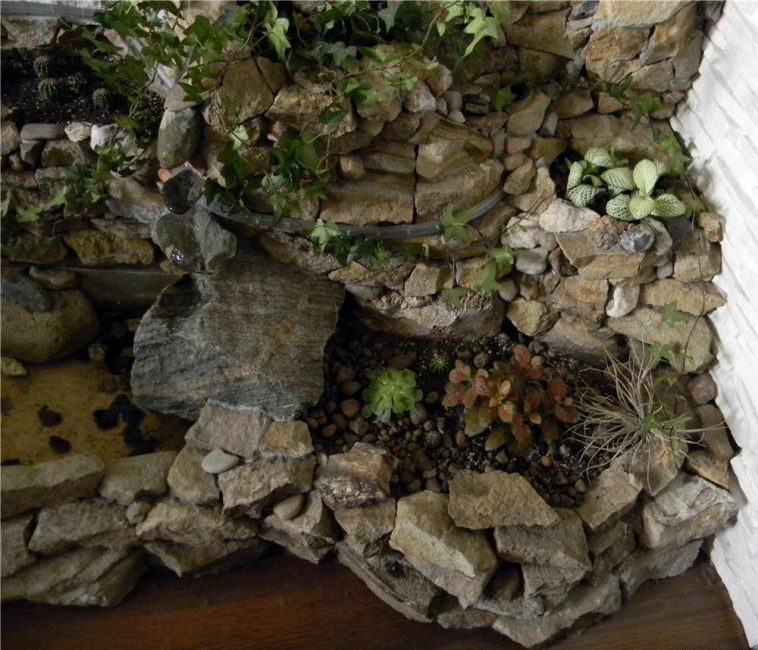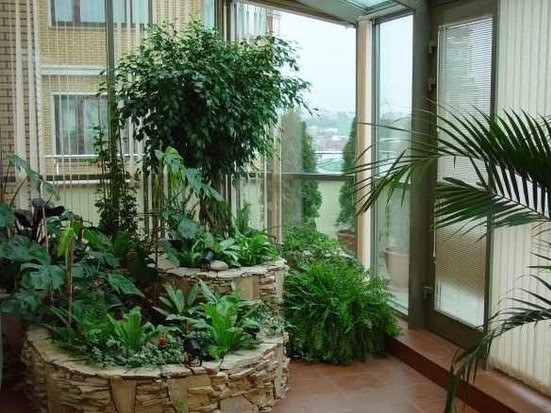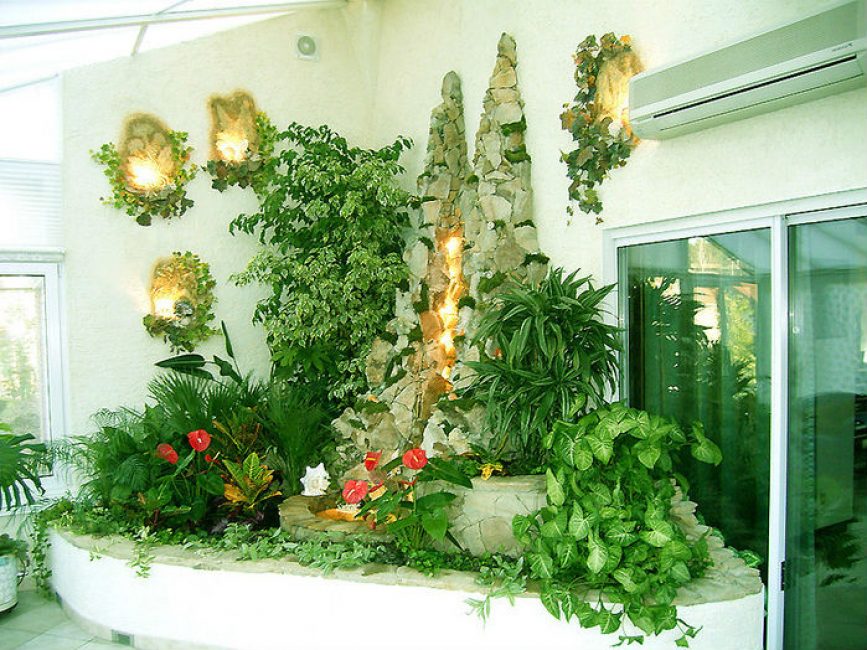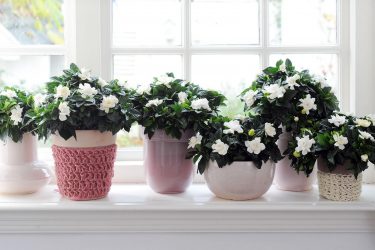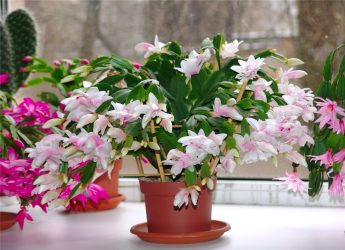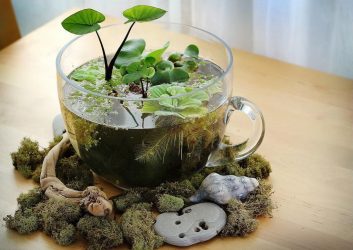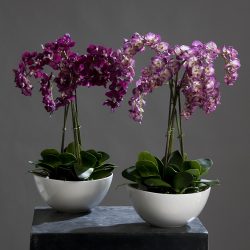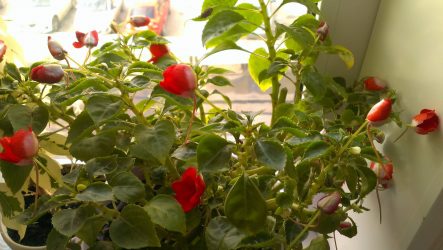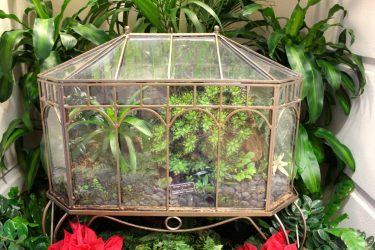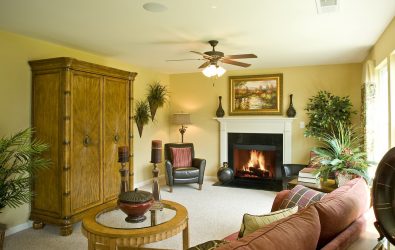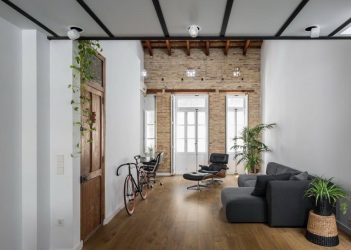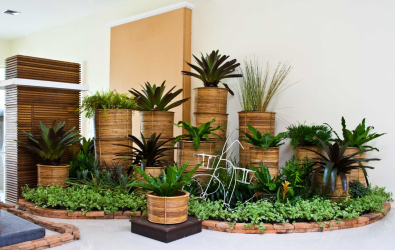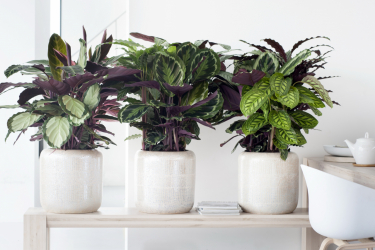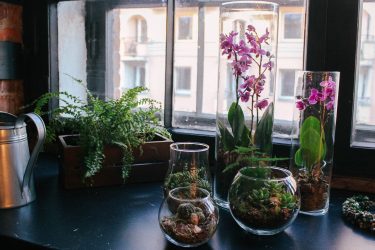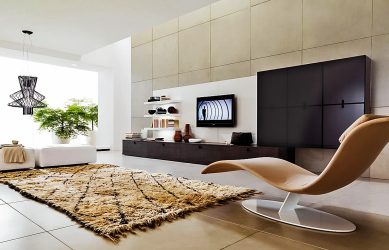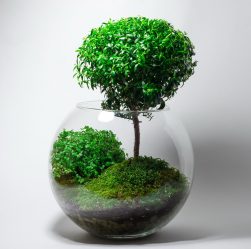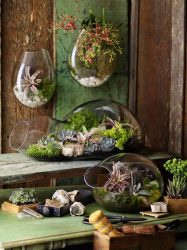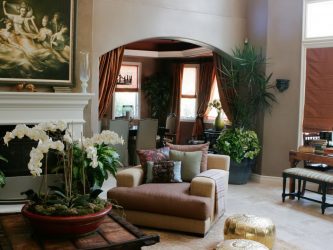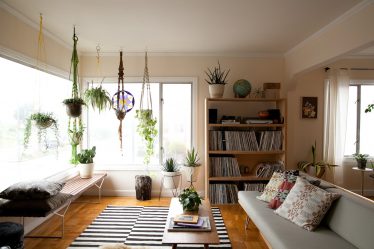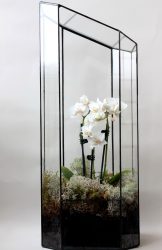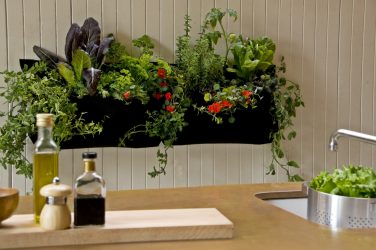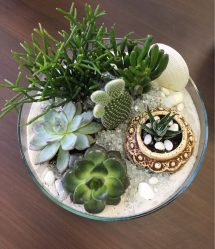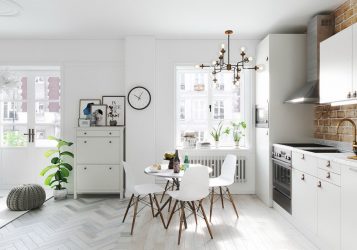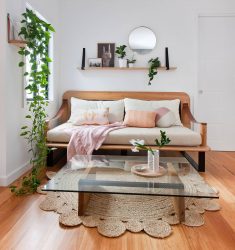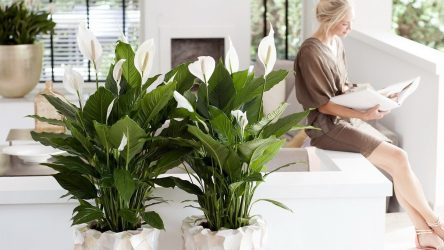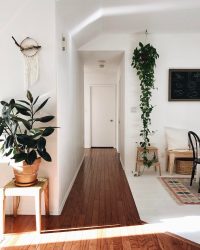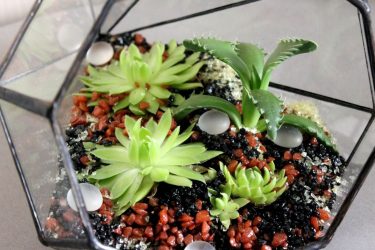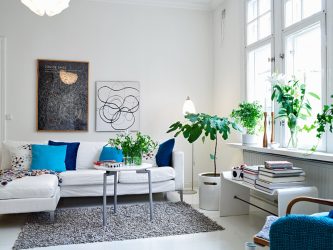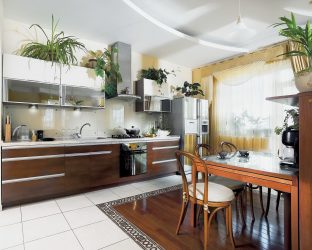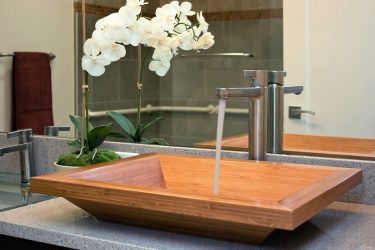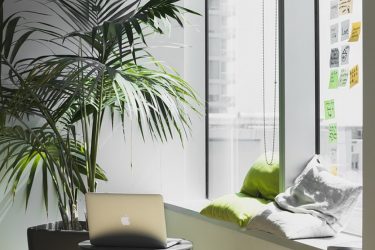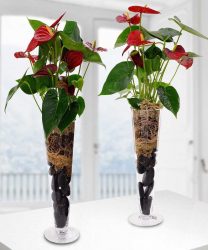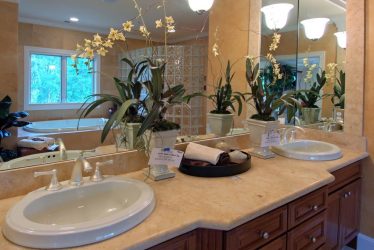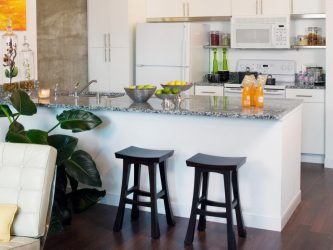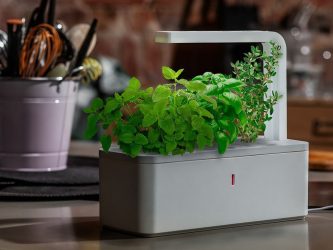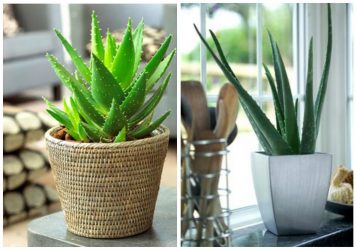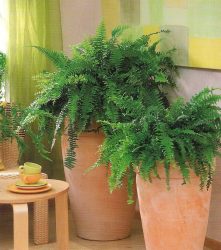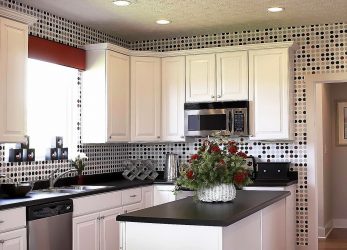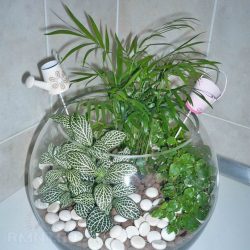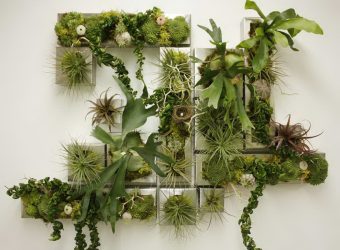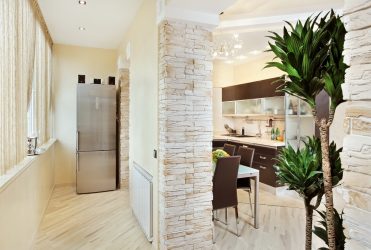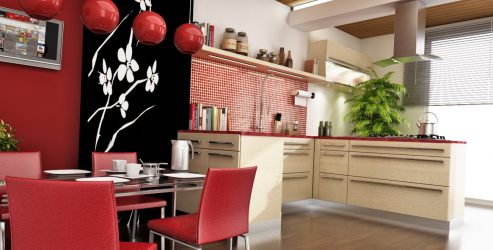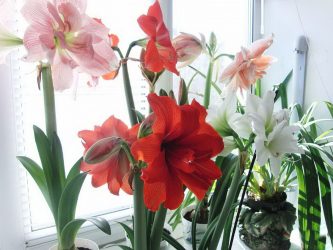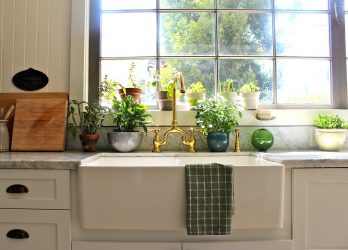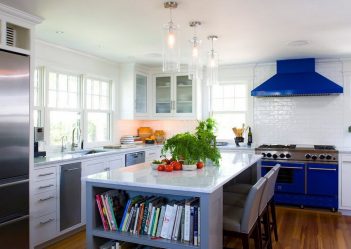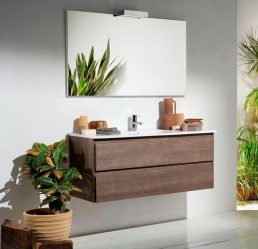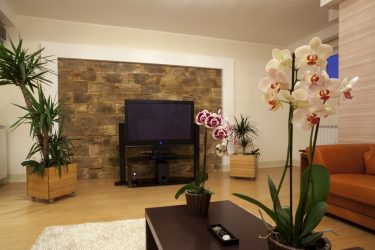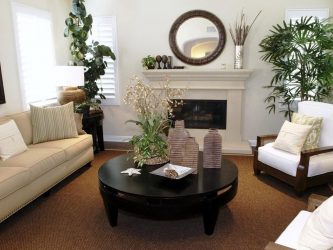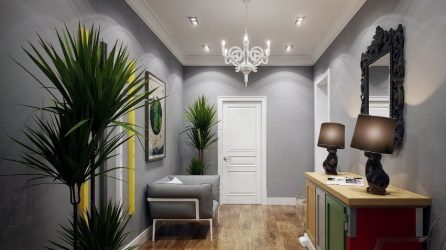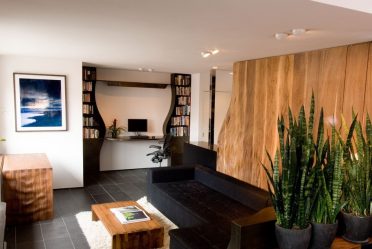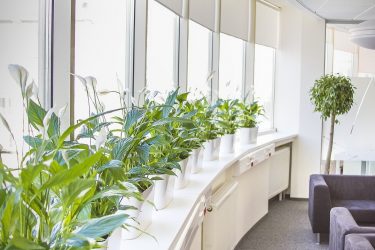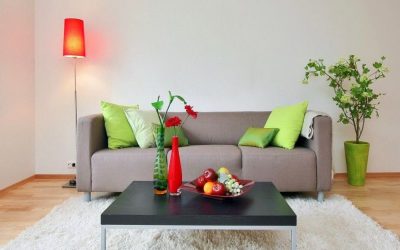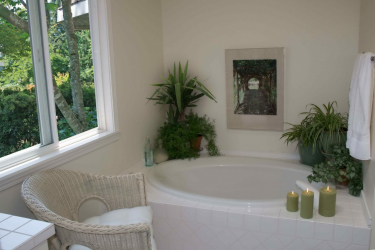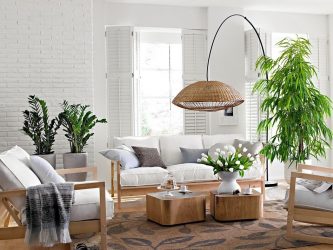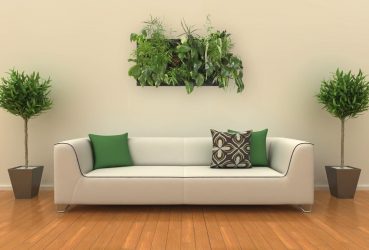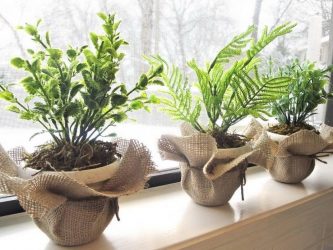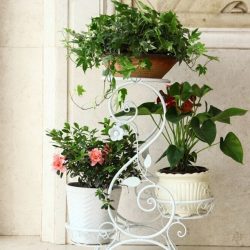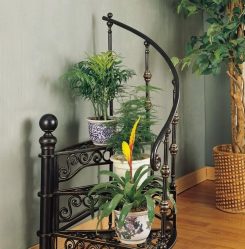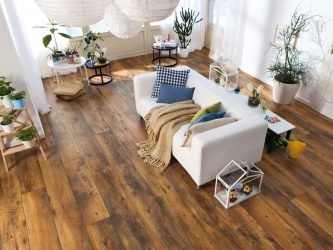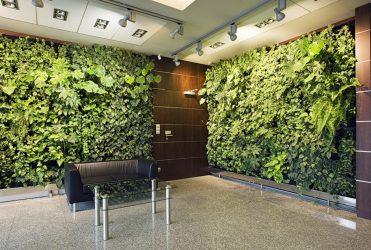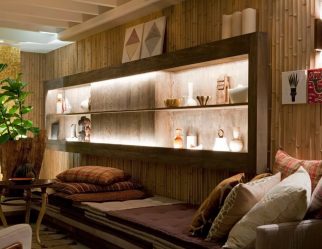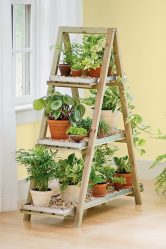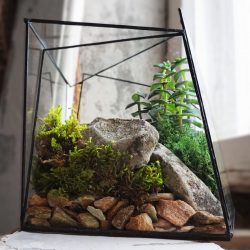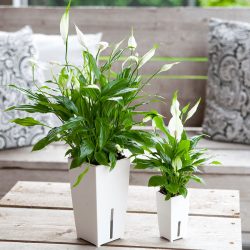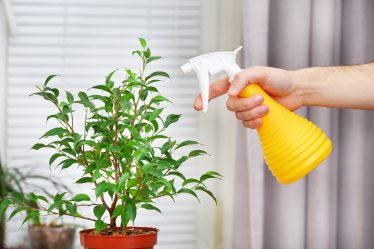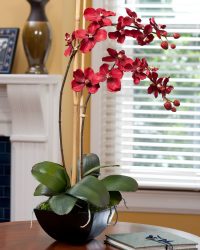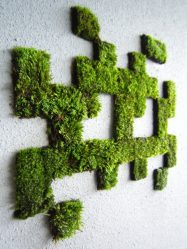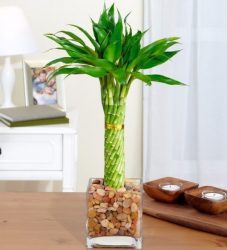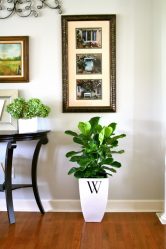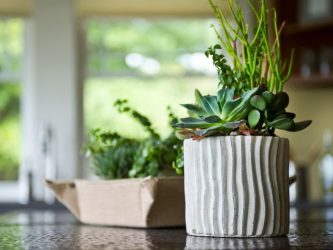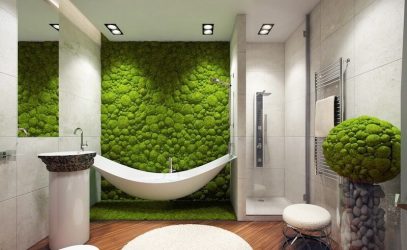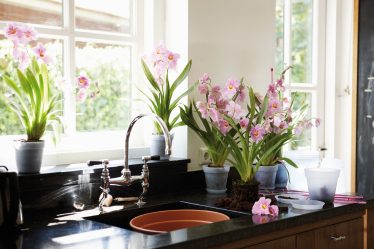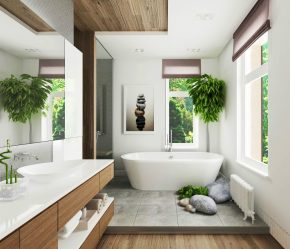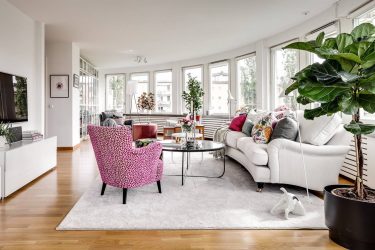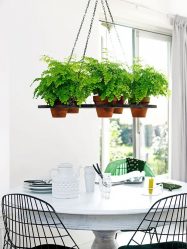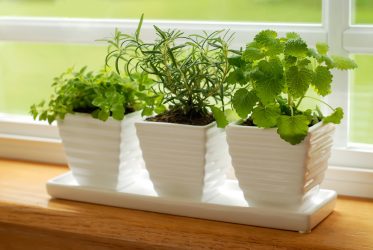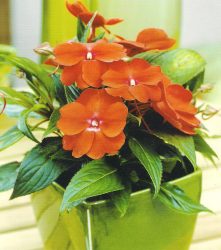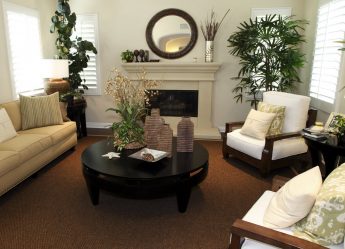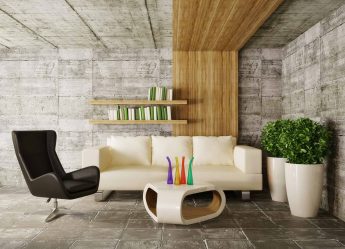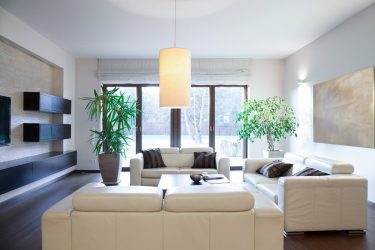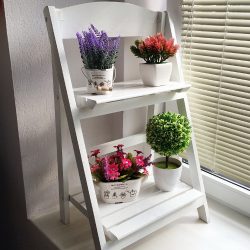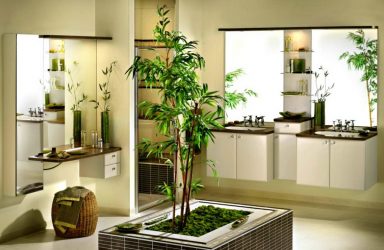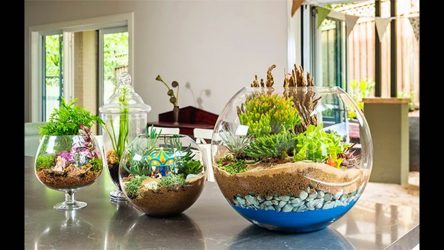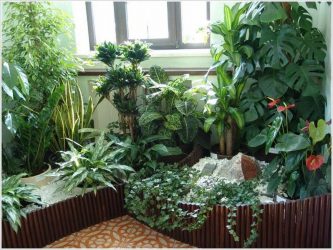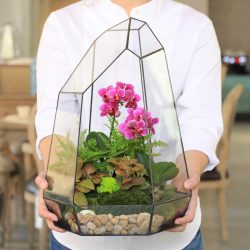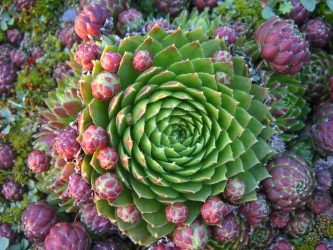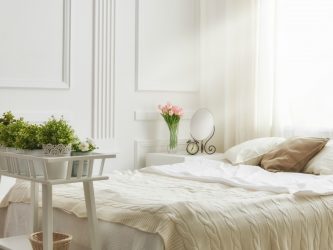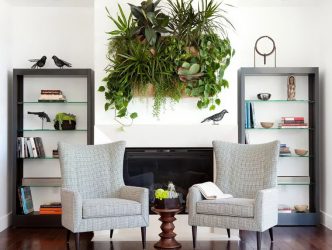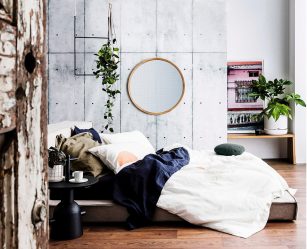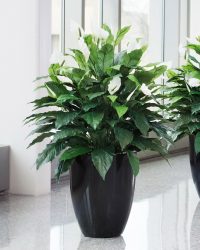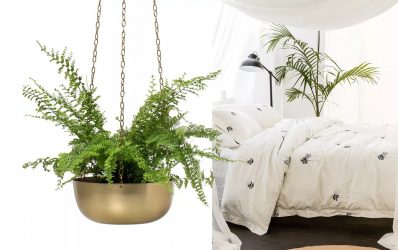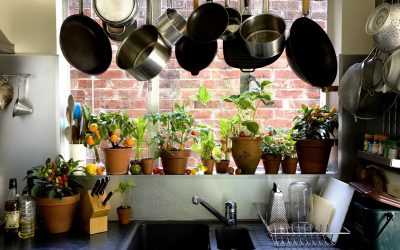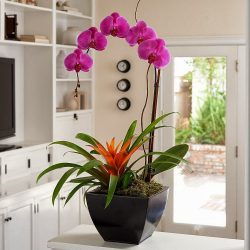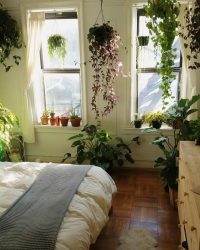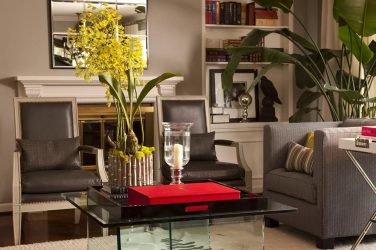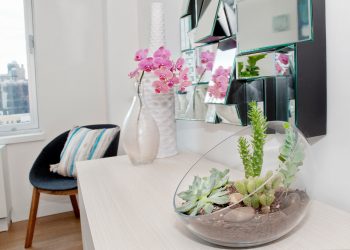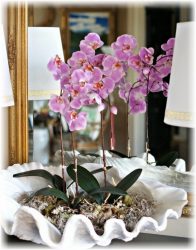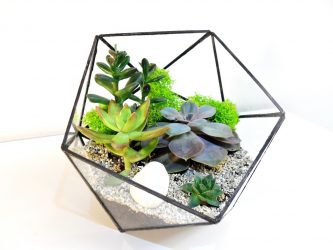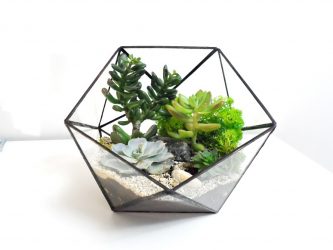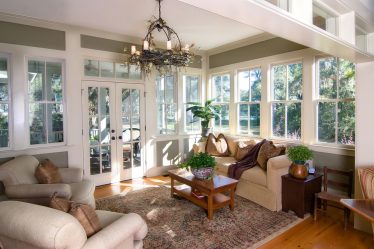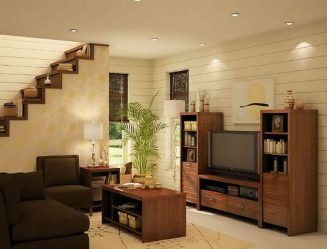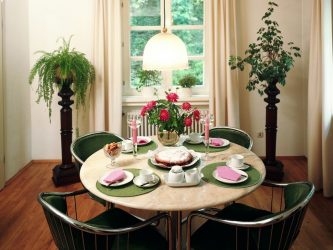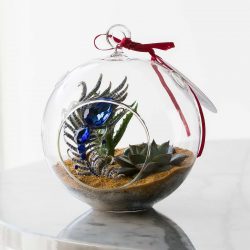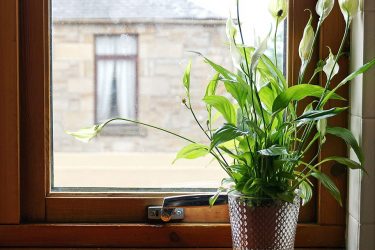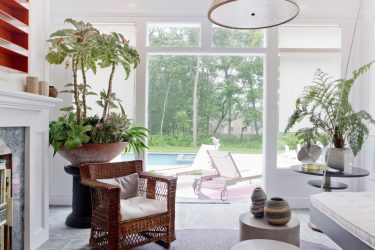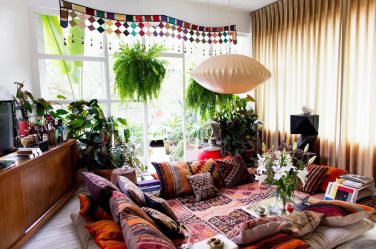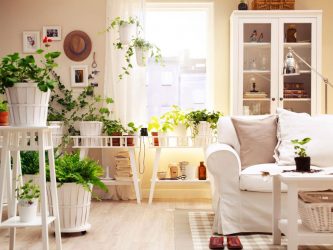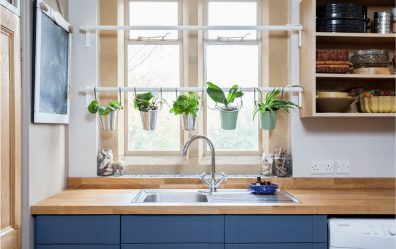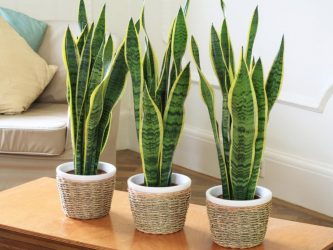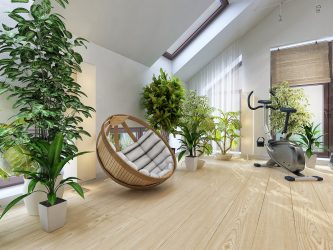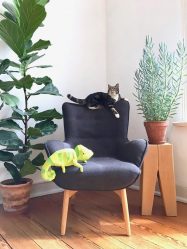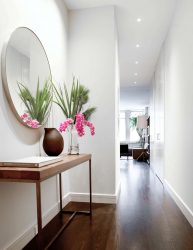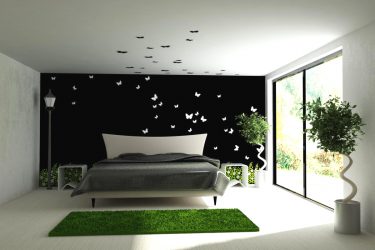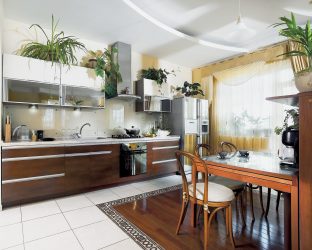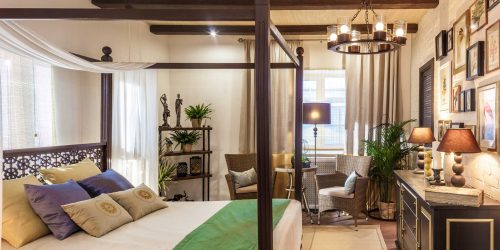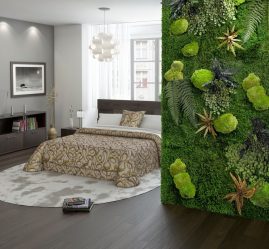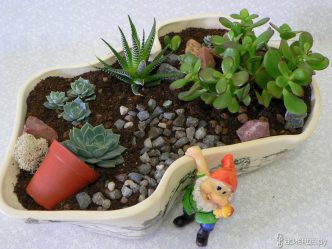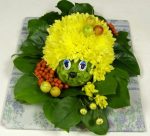
Houseplants at home help to achieve harmony. They set important accents and put combinations together.
Content:
House Plants - expert advice
Creating a home comfort is important not to disturb its melody. Living plants help the interior to “sound” more vividly and aesthetically. My tips will help you turn an ordinary apartment into a real fairy tale.
- Do not overload the space. Observe the parameters of plants and the dimensions of the room. Stop focusing on the expressive shapes and color of the leaves.
- Do not hide the beauty behind the curtains. Arrange the plants in plain sight, on racks and shelves, in hanging pots or on the floor.
- Consider compatibility. Remember that tropical and exotic plants can not make a harmonious ensemble with flowers from the last century.
- Focus on greens. Capacities for growing plants should not be bright and variegated. Choose neutral or monochromatic dishes. It is combined with any style of interior.
- Zone the room. Try to plan ecological zones using a wall of green loaches, ivy, ferns, or tall plants in pots.
- Look for hidden reserves. Warm up the balcony and arrange on it a miniature winter garden. Use for growing indoor flowers free walls, stairs and the most secluded corners.
- Strengthen the impression. If possible, place floral arrangements in front of mirrors. Beat them with a soft backlight.
Choosing plants for the house. Basic principles
Flowers arrived to our houses from the wild nature have a different character and require a certain arrangement and combination.
Today I want to share my own experience and important principles for choosing “green friends”.
return to menu ↑Plants in the interior of the kitchen
The kitchen is one of the important rooms in the house; this is the place where a woman spends a lot of time, where the whole family gathers at the table. "Green Pets" will help to create an atmosphere of comfort in it and improve the appetite.When choosing kitchen vegetation, I would recommend that you consider the following aspects:
- Stop picking on unpretentious, thermophilic and drought-resistant plants.
- Grow edible and fragrant herbs, parsley, dill in the kitchen, as well as pepper, lemon or coffee tree.
- Any improvisation from tin cans to decoupage turetes will be suitable as flower pots.
- Place the flowers away from the stove, it will be too hot there and from the sink, from there soap drops and food debris can reach;
- Grow flowers not only on the windowsill, but also in hanging pots, on wall shelves or on the refrigerator.
For landscaping my own kitchen space, I successfully use a composition of decoratively deciduous and flowering houseplants:
- wax or plain ivy;
- tradescantia;
- Kalanchoe and aloe;
- Saintpaulia (in common violet);
- geranium;
- asparagus;
- pike tail;
- chlorophytum;
- Pyla cadie and other members of the nettle family;
- bolster (money tree);
- room nightshade;
- fuchsia.
Home plants for the living room
The living room or hall is a place to receive guests and a room for a family vacation. Plants make it more noble, enliven the interior.
When choosing colors for the living room, I push off from square meters. For large areas, I suggest you boldly start growing large outdoor plants in pots.
- Monstera;
- zamiokulkas;
- tall varieties dracaena;
- all kinds of indoor palms, including date palms.
You do not have large square meters? Do not despair. I am sure that with the help of selected plants, even in a small apartment, you can create a unique oasis. In this case, I recommend you:
- all varieties of ficus;
- short dragon;
- anthurium;
- spathiphyllium;
- Calathea;
- clivia;
- hibiscus;
- nephrolepis.
Plants in the bedroom interior
The bedroom is known to be a particularly intimate room. It is intended for sleep and rest. That is why the living plants located in it must fit everything. It can not be overloaded with vegetation and turned into a greenhouse.
In the bedroom, it is permissible to arrange three or four, not very large, decoratively deciduous or moderately flowering cultures in beautiful flowerpots or in flowerpots. One or two plants will be appropriate to put on a cabinet or table, or hang from the ceiling.
Plants in the bedroom should continue its image, saturate the room with oxygen, an atmosphere of relaxation and not be too defiant. I suggest you, when choosing plants for the bedroom, beat it with the help of variegated ficuses, gentle spathiphyllums or beautifully blooming begonias and gardenias.
Bathroom
Fashion trend - to have live plants in the bathroom. The absence of windows should not be a hindrance to this undertaking. Thinking of arranging a green corner in the bathroom, but do not know where to start? I advise you to choose srednerosly vegetation not demanding to light and resistant to humid and warm atmosphere. To help you:
- ferns;
- ficus;
- cyclamen;
- Decembrist;
- hovey;
- violets;
- spathiphyllium;
- Dieffenbachia;
- climbing species (ivy, philodendron, epipremnum).
If you consider yourself a supporter of extraordinary solutions, then I recommend to start growing natural moss. Moss is a beautiful and ecological clean alternative to tile. He beautifully decorates the wall and feels great in a wet environment.
return to menu ↑The combination of styles and vegetation
The interior depends on the nature of the person. Currently there are a lot of trendy apartment design trends. In each of which must be present home plants. I will try to help you understand this issue.
- Classical. It is based on the symmetry of the forms. Living plants in such an interior must be large-flowered and luxuriantly flowering. They are located in the center and perimeter of the room. To create the look of classicism are suitable: palm varieties, rubber plants, spathiphyllium, hibiscus, oleander, cyclamen, begonias, gardenias and camellias.
- Modern. Its peculiarity lies in the smoothness and roundness of its outlines. Curly ivy and tradescantia, as well as hoya, cissus, philodendrons and orchid, will perfectly fit into the modern.
- Provence. The motto of this style is the maximum vegetation. He is suitable simple "village" plants and exquisite exotic. Organically in the style of Provence look compositions from Saintpaulia and pelargonium, terry geraniums, violets, homemade roses, begonias and hoyas. Leave a place for sansevierii, ivy, ficus and philodendron. The image will be finished with bulb-grown ranunculus or eustoma.
- Minimalism. The name itself says that everything should be small. However, in it there was a place for vegetation. An option for this style is dracaena and sander. In addition, minimalism goes well with diphenbachia, crotons, Zamiokulkas. Anthurium and spathiphyllium or ficus will make a good company.
- Loft. The favorite style of modernity. It combines simplicity and space. Flowers and plants seasoned in this style should not be fanciful and pompous. It can be cascades of greenery, falling from the ceiling to the floor, single large plants in pots and fruit-bearing home-grown trees.
Original use cases
Fashion is dictated by new trends and trends, including the cultivation of indoor plants. I want to draw your attention to Three options for the use of vegetation in interior design are vertical gardening, home rock garden and florarium.
return to menu ↑Vertical gardening
Unfortunately, the parameters of many apartments do not allow growing a large number of plants. Smartly plant the room, you can absolutely not taking up a lot of space in it. The composition of decoratively leafy and flowering plants on the wall can be compared with a lively picture..
Vertical floristic compositions can be placed in the corners and piers, as well as to dedicate free walls to them. The “Green Panel” can decorate any apartment, even a small one-room apartment.
For his appearance at home, I can recommend the following plants:
- Ornamental varieties of red aglyonema;
- low-growing varieties of spathiphyllium,
- variegated and green leafy fats;
- varieties of medium and dwarf ferns;
- all varieties of chlorophytum;
- Sansevera low;
- hoya;
- Calathea;
- Coleus (decorative speck);
- ampelous plants.
Florarium
Fans of aesthetics, exotic and minimalism can advise growing plants in the florarium. Occupation is fashionable and very exciting. A lot of investment and time for this is not required, but visually looks beautiful.
Florarium called a mini-garden behind the glass. The basis of its cultivation can take an ordinary aquarium or other glass container. With its help it is not difficult to refuse cultivation of exotic flowers in ordinary pots.
Group compositions from slow-growing plants are planted in a miniature flower garden. Among the most popular are:
- ferns (polynokarnik, asplenium and pteris);
- sphagnum moss;
- ivy;
- small succulents;
- cacti;
- orchid;
- cyclamen;
- Saintpaulia.
Home rock garden
Not everyone can be an owner of a greenhouse or a winter garden, but one wants to create a piece of wildlife and get in touch with the beautiful. If you like this idea, then I advise you to prepare a place for a home rock garden.
Homemade flowers framed in natural stone, with a melodious sound of water and decorative lighting - this is what you need. Rock garden will be a real highlight of the interior and your pride.
The advantage of it is that the design can be adjusted by replacing or rearranging plants. Clear guidelines for the settlement of home rock garden does not exist. The main thing is to observe its geometric forms and follow the principle from small to large.
I propose here to show maximum imagination and improvise with tropical, exotic and most ordinary, decoratively leafy and flowering representatives of the flora (the only exceptions are cacti). A canary cage or an aquarium will help to revive the paradise.
Houseplants give us positive emotions and help to establish the inner harmony of the soul. Talking about home plants in the interior can be as infinite as they are amazing and beautiful.
If you have read this article to the end, then you are on the right track and you will certainly succeed. I wish everyone design success with the help of green leaves and elegant flowers.
Flowers at home
We update the interior with the help of indoor plants

